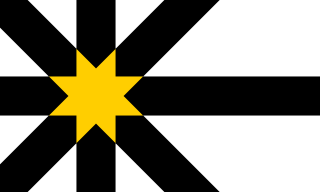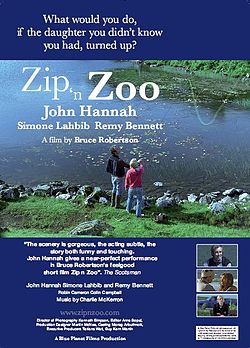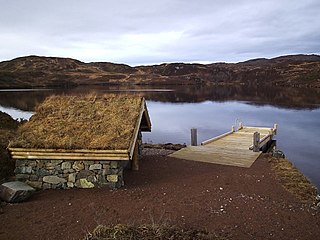
Sutherland is a historic county, registration county and lieutenancy area in the Highlands of Scotland. Its county town is Dornoch. Sutherland borders Caithness and Moray Firth to the east, Ross-shire and Cromartyshire to the south and the Atlantic to the north and west. Like its southern neighbour Ross-shire, Sutherland has some of the most dramatic scenery in Europe, especially on its western fringe where the mountains meet the sea. These include high sea cliffs and very old mountains composed of Precambrian and Cambrian rocks.

Suilven is a mountain in Scotland. Lying in a remote area in the west of Sutherland, it rises from a wilderness landscape of moorland, bogs and lochans known as Inverpolly National Nature Reserve. Suilven forms a steep-sided ridge some two kilometres in length. The highest point, Caisteal Liath, lies at the northwest end of this ridge. There are two other summits: Meall Meadhonach at the central point of the ridge is 723 metres (2,372 ft) high, whilst Meall Beag lies at the southeastern end.
Achmelvich is a settlement situated in the Highland region of Scotland. The name comes from the Gaelic "Achadh" - a plain or meadow and "mealbhaich" - sandy dunes.

Assynt is a sparsely populated area in the south-west of Sutherland, lying north of Ullapool on the west coast of Scotland. Assynt is known for its landscape and its remarkable mountains, which have led to the area, along with neighbouring Coigach, being designated as the Assynt-Coigach National Scenic Area, one of 40 such areas in Scotland.
The Northwest Highlands are located in the northern third of Scotland that is separated from the Grampian Mountains by the Great Glen. The region comprises Wester Ross, Assynt, Sutherland and part of Caithness. The Caledonian Canal, which extends from Loch Linnhe in the south-west, via Loch Ness to the Moray Firth in the north-east splits this area from the rest of the country. The city of Inverness and the town of Fort William serve as gateways to the region from the south.

Canisp is a mountain in the far north west of Scotland. It is situated in the parish of Assynt, in the county of Sutherland, 25 kilometres (16 mi) north of the town of Ullapool. Canisp reaches a height of 847 metres (2,779 ft) and qualifies as a Corbett and Marilyn hill. The mountain's name translates from the Old Norse kambsnípa or point of the comb/ridge.

Loch Inver is a 3.62-kilometre-long sea loch in Assynt, Sutherland and is on the northwest coast of Scotland. The loch meets the coastal embayment of Enard Bay at the north end and The Minch, where it meets Soyea Island at its mouth.

Loch Assynt is a freshwater loch in Sutherland, Scotland, 8 kilometres (5.0 mi) north-east of Lochinver.

Stoer is a crofting township in the parish of Assynt, Sutherland, in the Highlands of Scotland and in the council area of Highland. It is located about five miles north of the village of Lochinver.

Zip 'n Zoo is a 2008 film directed by Bruce Robertson and starring John Hannah, Simone Lahbib and Remy Bennett. The name of the film is derived from the sound of casting during fly-fishing.

Inverkirkaig is extremely remote scattered crofting township, situated on the north eastern bay, of the sea loch Loch Kirkaig, in the Assynt district of Sutherland, Scottish Highlands and is in the Scottish council area of Highland.

Badnaban is a remote scattered coastal village, which lies on the south shore of the sea loch, Loch Inver, in the Assynt district of the west coast of Sutherland, Scottish Highlands. and is in the Scottish council area of Highland.
Strathan is a remote scattered coastal village, located in Bàgh an t-strathain Bay, which lies on the south shore of the sea loch, Loch Inver, in the Assynt district of the west coast of Sutherland, Scottish Highlands and is in the Scottish council area of Highland. Strathan is situated less than 1 mile northeast of Badnaban, 1 mile north of Inverkirkaig, and 2 miles southwest of Lochinver

Loch Kirkaig is a small tidal sea loch, located in the region and parish of Assynt in south-west of Sutherland, in the west coast of Scotland and in the Scottish Highlands. Loch Kirkaig is 1.25 miles south of Loch Inver. The scattered crofting township of Inverkirkaig is located at the headland of the bay, next to the pebbly beach, on the round bay, which has no known name. The name Kirgaig comes from old Norse, Kirkju-vik meaning church bay, perhaps suggesting that in Viking times, there was a church, with a village located in the bay.

The Garve and Ullapool Railway was one of several branch railway-lines proposed for the North-West Highlands of Scotland, in the 1880s and 1890s. The project received approval from the Westminster Parliament by means of a Local Act of 14 August 1890. The line did not gain financial backing and was never constructed. Renewed attempts to build it were made in 1896, 1901, 1918 and 1945, again with no success.

Soyea Island or Soyea is an uninhabited rocky island at the mouth of Loch Inver, in Assynt, Sutherland, in the council area of Highland, Scotland. It is three nautical miles west of Lochinver and two nautical miles south-southwest of Achmelvich. The Broad Rocks extend up to 400 yards from the eastern edge of Soyea Island. Measuring approximately 1⁄2 mile from east to west, its area is 20 hectares and it rises to an elevation of 38 metres (125 ft). Soyea marks the entrance of the fishing harbour of Lochinver. Soyea Island has a yellow pedestal light on it.

Loch Leitir Easaidh is a small shallow irregular shaped freshwater lochan that flows directly into the northwestern end of Loch Assynt in Assynt, Sutherland, Scotland. The loch is located in an area along with neighbouring Coigach, as the Assynt-Coigach National Scenic Area, one of 40 such areas in Scotland.

Loch Culag also known as Loch na Doire Daraich is a small freshwater shallow loch, located south of Lochinver in the Assynt district of Sutherland, Highland, Scotland. The loch is located in an area along with neighbouring Coigach, as the Assynt-Coigach National Scenic Area, one of 40 such areas in Scotland.

Fionn Loch is a small irregular-shaped shallow freshwater loch, on a north-west to south-east orientation that is located 3 miles southeast of Lochinver in the Assynt district of Sutherland in Scotland. The loch is located in an area known as the Assynt-Coigach National Scenic Area, one of 40 such areas in Scotland.




















